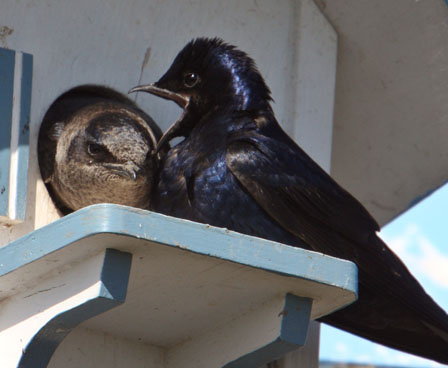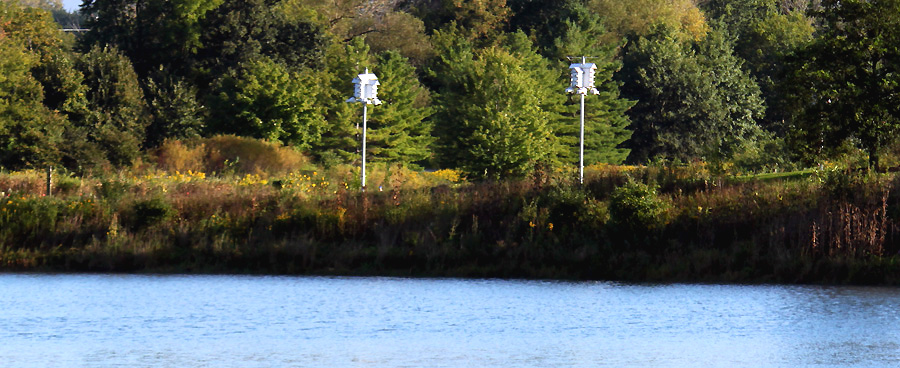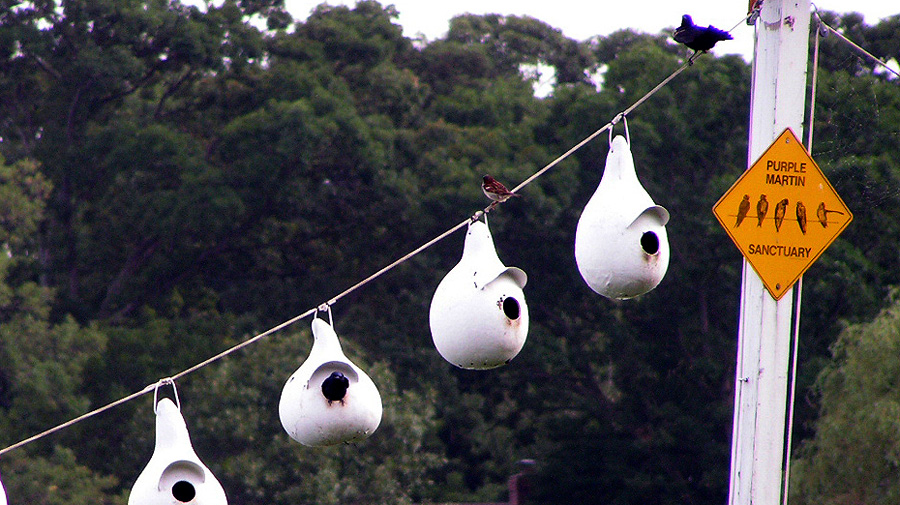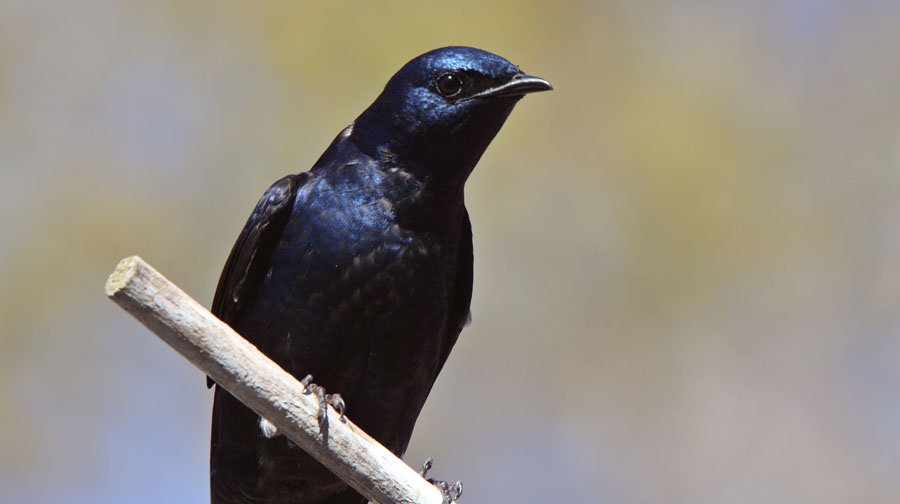
Purple martins are the largest swallow in the United States, and stand out from other swallows because of their colors and behavior. The males are a deep blue while the females are a gray-brown color. The pair shown here might even be in the process of building their nest; it's something purple martin pairs will do together.
While many swallows nest in mud homes, purple martins most often nest in woodpecker holes or in man-made birdhouses. Purple martins exclusively eat insects. When weather turns extreme, these little swallows are in real danger. Often a late freeze or heat wave makes finding food difficult for purple martins. Unfortunately there is little to do. For purple martin landlords with lots of space; however, there are a few ways you can help purple martins make it through difficult weather seasons.
You might want to create an insect-friendly area for purple martins by leaving a part of your yard free of pesticides (and not mowing the area). You can also place your purple martin homes near water, where insects naturally occur more frequently.
A lake or a boat dock is a great location for a purple martin house for more than one reason. Purple martins prefer nesting in houses that are at least 40' from any trees or structures, and are 10-20' off the ground. If you find a spot near water, you can setup a housing community that fits the bill and really appeals to purple martins.
 In addition to bad weather, purple martins have other threats to contend with. Competition for nesting sites and predators that want to get into their nests make purple martins vulnerable to attack. Gentle birds by nature, purple martins have a difficult time with more aggressive (and non-native) birds like European Starlings and House Sparrows who drive them away from their nesting spaces.
In addition to bad weather, purple martins have other threats to contend with. Competition for nesting sites and predators that want to get into their nests make purple martins vulnerable to attack. Gentle birds by nature, purple martins have a difficult time with more aggressive (and non-native) birds like European Starlings and House Sparrows who drive them away from their nesting spaces.
By adding starling-resistant door covers or throwing out nesting materials that non-native birds put in a purple martin house, you can help give purple martins a good chance at a successful breeding season.

Purple martin birds are also threatened by predators including raccoons and snakes. By putting up a guard (similar to a squirrel baffle) on your purple martin pole, you'll help discourage predators. Before your birds arrive, take time to clean out the nesting spaces (if you haven't already done it), add a starling door guard and put up pole guards to deter pests that might bother your birds.
When the weather warms up, purple martins will begin to arrive. From February in the South to May in the North, you'll see a few early birds returning to previous nesting sites. Shortly after that, more birds will arrive. Open your purple martin house up at the first sign of returning birds.
Purple martins tend to nest and, after the young have left the nest, roost together in larger groups. You rarely find a purple martin far from others unless it's early in the season when birds are looking for a nesting site.
At the end of the season, large group of purple martins will migrate south together. Hundreds of birds create massive flocks that make the long journey to South America together each fall, and then return to the United States in the spring. They are truly spectacular birds.
Want to learn more about purple martins? These purple martin books are a good resource and have additional information you can use to start or help expand a purple martin community. It takes time to create a safe nesting place for purple martins, so with commitment and a little luck you can make a big difference for these beautiful little birds.
